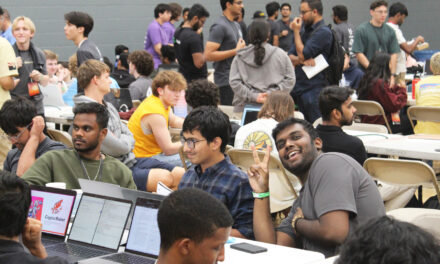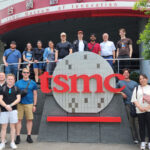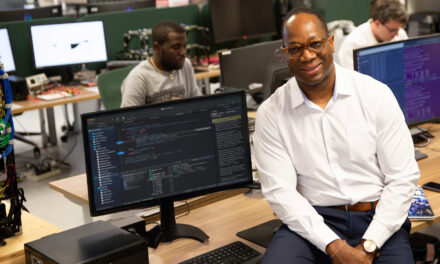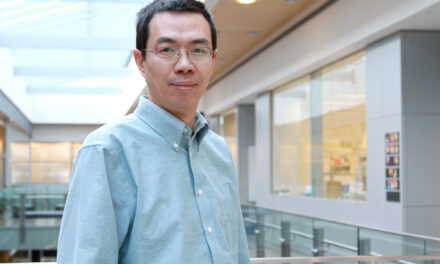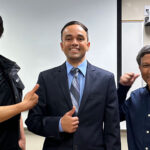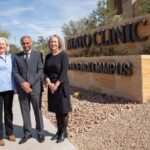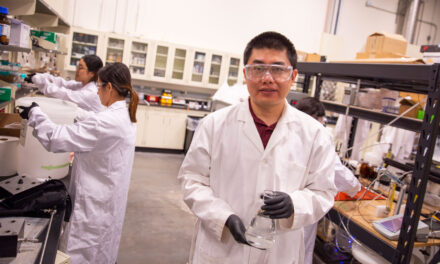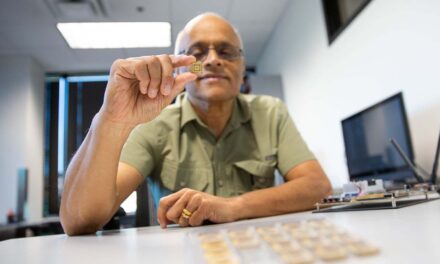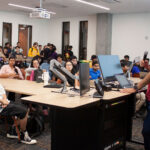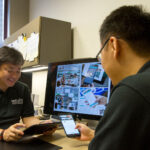
Advancing technology for a population advancing in years
Engineering offers solutions to aging-related health concerns
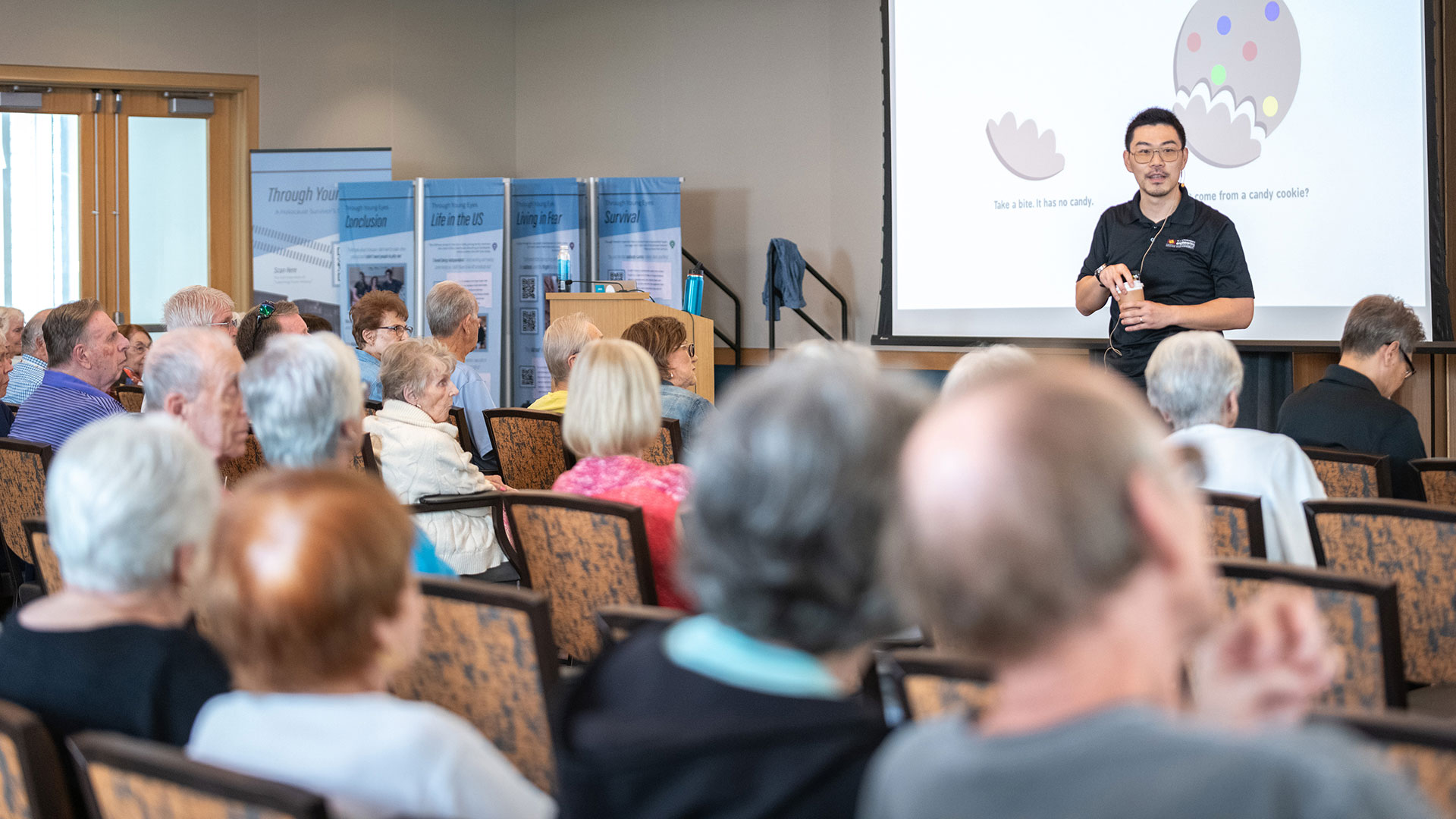
The bad news: We are getting older.
The good news: We are getting wiser.
In 2020, the group of Americans aged 65 and older grew to 55.8 million, or nearly 17% of the total population. Experts warn of a strained health care system, workforce shortages and spiraling care costs. Younger Americans, millennials and Gen Z, increasingly view themselves as the “sandwich generation” caught between caring for small children and assisting their parents.
While the challenges associated with managing an aging population might seem daunting, researchers in the Ira A. Fulton Schools of Engineering at Arizona State University believe technological innovations, including artificial intelligence, or AI, can offer solutions to help tackle these challenges.
Fulton Schools faculty members are hard at work on such research projects.
Heather Clark, director of the School of Biological and Health Systems Engineering, says the Fulton Schools is at the leading edge of biomedical engineering and is embracing new technology, including AI, as a powerful tool for advancing medical capabilities.
“Our goal is to equip our future physicians and medical engineers with the basics of AI and to apply this knowledge to best practices in patient care,” Clark says. “Our students will be at the forefront of innovation in a rapidly evolving medical landscape.”
Improving Alzheimer’s screening to enhance treatment options
In the School of Computing and Augmented Intelligence, researchers are working on a variety of projects designed to promote better health and quality of life options for older Americans.
Teresa Wu, a professor of industrial engineering in the Fulton Schools, helms a research lab using AI to create better diagnostic tools for early detection of Alzheimer’s disease. Wu, who was recently named an ASU President’s Professor, is working with a team of doctoral students to use AI to harmonize PET scans taken with different types of tracers.
PET scans typically use a radioactive contrast agent called a tracer to highlight blood vessels, organs and soft tissues, making them easier for radiologists to see on the images. Since there are five different FDA-approved tracers, each with unique properties, and different clinics use different tracers, it can be hard for researchers to compare data.
The AI model developed by Wu’s team shows what a brain scan taken using one type of tracer would look like if it had been taken using a different one, enabling easier comparison and research.
Since treatment for Alzheimer’s is typically most effective when begun in the early stages of the disease, Wu’s efforts to ensure that doctors and clinical staff have access to the most accurate diagnostic information can help older Americans get better treatment and be more prepared for their futures.
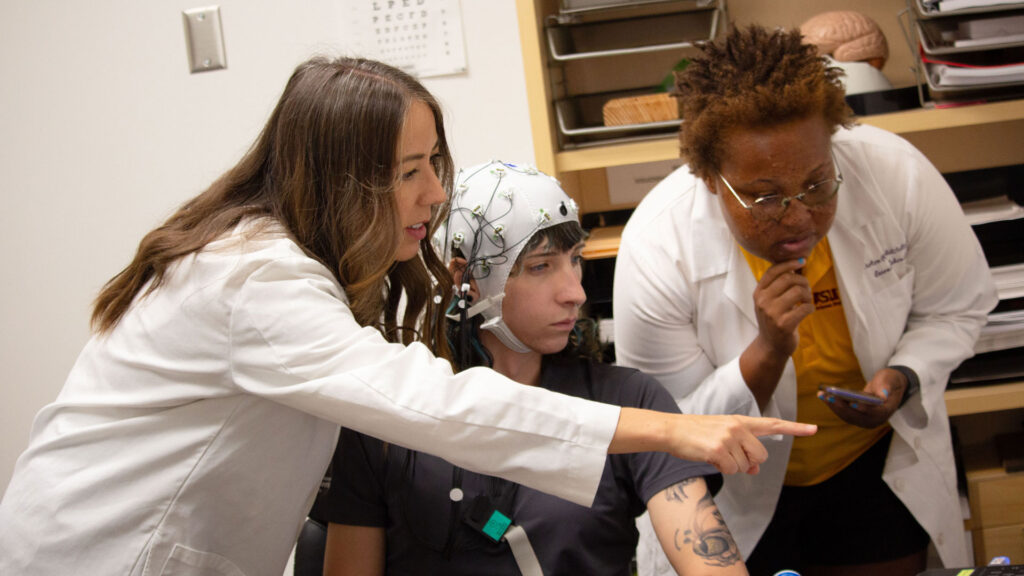
Doctoral student Alexi Reed (right) is pictured with undergraduate biomedical Associate Professor Sydney Schaefer (left), as they view the neural brain activity of engineering student Briana Branson (middle). Fulton Schools researchers employ tools such as an electroencephalogram, or EEG, which measures electrical activity in the brain. This test involves placing small metal discs, known as electrodes, on a cap fitted directly onto the subject’s scalp. Photographer: Allison Lyne/ASU
Providing affordable non-invasive Alzheimer’s monitoring solutions
While the tools being developed by Wu’s team will improve diagnosis efforts, patients will need ongoing assistance and care. With a rapidly growing population, neurodegenerative diseases like Alzheimer’s disease and Parkinson’s disease are becoming increasingly prevalent, impacting not only patients but their families as well.
For biomedical engineering doctoral student Alexi Reed, this national trend hits close to home. Her passion for studying neurodegenerative diseases was sparked by her own experience caring for her grandfather, who battled both cognitive decline and Parkinson’s disease.
“I helped care for my grandfather, who struggled with multiple chronic health issues, including Parkinson’s disease,” Reed shares. “Watching his condition progress was difficult, but it also ignited my passion for understanding neurodegenerative diseases and finding ways to improve the lives of patients like him.”
The challenges of managing his complex condition, combined with the emotional strain of watching a loved one suffer, fueled her determination to make a difference in the field of biomedical engineering.
It was during those trying times that Alexi’s interest in neurodegenerative diseases first emerged.
“I got interested in neurodegenerative diseases and trying to treat them, but I just never fully pursued it while in undergrad,” she says.
Associate Professor Sydney Schaefer, a leading researcher in neurodegenerative diseases, outlines the mission of their human subjects research lab.
“We aim to develop affordable, non-invasive and widely accessible solutions for assessing and monitoring Alzheimer’s disease risk among older adults,” Schaefer says. “Our work addresses both cognitive and functional declines associated with the disease, which are crucial for diagnosing dementia.”
Her lab’s approach assesses cognitive decline with neuroimaging, which provides an in-depth understanding of Alzheimer’s disease pathology and progression.
Schaefer’s research is driven by a commitment to increasing inclusion and equity in Alzheimer’s disease screening and care. Their findings are poised to have a significant impact on the field, offering a unique opportunity to boost a health care system that is facing increasing demands to provide care for chronic conditions neurodegenerative diseases.
Keeping a watchful eye on good health
One challenge in the development of new technology is ensuring patients will trust it.
Assistant Professor Asif Salekin is an expert in human-centered computing, machine learning and cyberphysical systems with a focus on ubiquitous computing. His research centers on integrating sensing solutions for smart and mobile health, with a strong emphasis on sensing security, privacy and the application of AI in health care.
“AI can significantly enhance disease diagnosis, remote monitoring of disease progression and support for the aging population,” Salekin says. “For instance, AI is already being used to detect preclinical Alzheimer’s from brain MRIs, diagnose Parkinson’s disease through speech analysis, and identify dementia, among other conditions.”
A major challenge with continuous monitoring of disease progression is enabling personalized and adaptive treatments for patients suffering from cognitive decline.
Software-based systems for monitoring elderly patients remotely are using vision-based systems for health care professional to track Alzheimer’s disease progression.
“These systems can violate privacy and are sometimes rejected by patients who view them as invasive or a threat to their independence,” Salekin says. “In contrast, research is being conducted on privacy-preserving wearable watches, non-invasive infrared, Wi-Fi and radio sensors hold promise for gaining wider patient acceptance.”
Salekin believes that this type of research will lead to innovations that benefit the over-taxed health care system and provide tools and devices people will want to use.
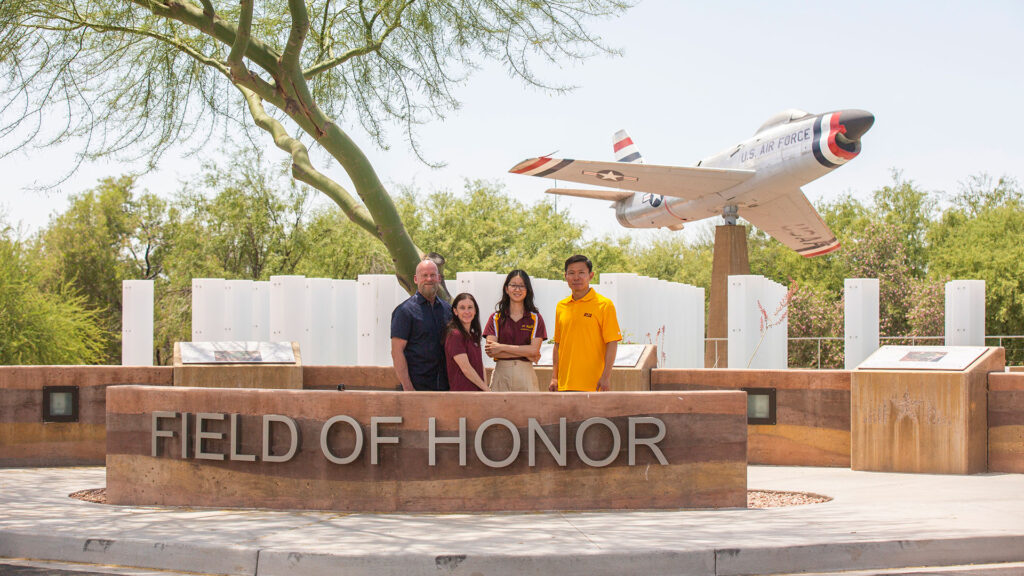
An interdisciplinary team of researchers at Arizona State University is working on using AI to improve health care outcomes for aging, socially isolated veterans. Photographer: Erika Gronek/ASU
Making every day Independence Day for aging vets
One such project, the creation of a device to assist aging veterans, is underway in the School of Computing and Augmented Intelligence.
The effects of social isolation are damaging and can have severe consequences for quality of health. While many aging Americans are at risk of feeling or being socially isolated, veterans are particularly vulnerable.
A cross-disciplinary team of researchers led by Ming Zhao, an associate professor of computer science and engineering in the School of Computing and Augmented Intelligence, has received a grant from the National Science Foundation to develop solutions
The team is working to create an AI-powered digital assistant that will run on a small device in an aging veteran’s home. The device might automatically promote memory exercises, suggest physical workouts, encourage the veteran to reach out to friends to improve emotional well-being or recommend community activities. The new technology will also watch for changes in behavior patterns to assist with early intervention for veterans dealing with memory issues or worsening conditions.
“The project is about helping veterans stay independent,” Zhao says. “But when they need help, they can get help.”
The team includes Nicole Roberts, an associate professor of psychology in the School of Social and Behavioral Sciences, David W. Coon, associate dean of research initiatives, support, and engagement and professor in the Edson College of Nursing and Health Innovation and Erin Chiou, an associate professor of human systems engineering in The Polytechnic School.
Ross Maciejewski, director of the School of Computing and Augmented Intelligence, says this project exemplifies the kind of research being done in the Fulton Schools.
“From autonomous vehicles to edge devices to medical imaging enhancements, our faculty members are pursuing research designed to help us stay active, healthy and independent as we age,” he says.
Older Americans see great value in emerging AI technology
AI has the potential to greatly enhance health care for the aging population, but it must be rigorously tested to prevent risks such as misdiagnoses or inappropriate interventions. Salekin believes developing privacy-preserving and user-friendly systems is crucial to address concerns about independence and security, ensuring broader acceptance and effective use of AI in elderly care.
However, the aging population seems ready to explore these advancements to improve their quality of life. Zhao and his team received enthusiastic support from veterans in studies relating to the development of the new AI-enabled device.
Over the summer, Yezhou “YZ” Yang, an associate professor in the School of Computing and Augmented Intelligence, presented a workshop called “AI and the Joy of Living” to the residents of Mirabella at ASU, a retirement community for seniors interested in remaining active, lifelong learners.
During the workshop, they expressed enthusiasm about writing tools like ChatGPT, and most especially for self-driving cars, a transportation option that they felt would help preserve their independence.
Mirabella resident Janet Leopold left the presentation determined to investigate ASU’s AI educational offerings.
“I want to learn as much about this new technology as I can,” she said.
Allison Lyne contributed to the development of this story.







